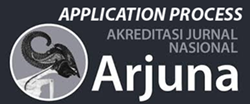Implementation of Bureaucratic Reform to Improve Public Services
DOI:
https://doi.org/10.59653/jbmed.v1i01.19Keywords:
implementation, bureaucratic reform, election monitoring bodyAbstract
This study aims to describe the implementation model of bureaucratic reform that has been carried out, both in Indonesia and several other countries. Provide a comprehensive understanding of the importance of bureaucratic reform. The research method used is the library research method from various sources related to bureaucratic reform. The results of this literature review illustrate that the bureaucratic reforms that have been carried out in several countries are generally related to two dimensions, namely the organizational dimension and the dimension of apparatus human resources. In the context of carrying out the implementation of bureaucratic reform at Provincial Bawaslu and Regency/City Bawaslu, what needs to be done immediately is the making and stipulation of a Bureaucratic Reform Team Decision Letter, making and stipulating a Role Model Decree and Bureaucratic Reform Change Agent covering 8 areas of change, preparing an implementation action plan bureaucratic reform, filling out bureaucratic reform evaluation worksheets, monitoring and evaluating the implementation of bureaucratic reform every month.
Downloads
References
Abidin, Z., & Effendi, A. (2022). INTEGRITAS PENGHULU DALAM PELAYANAN NIKAH: Memotret Pelayanan Publik Pada Kantor Urusan Agama Kecamatan Sebagai Bentuk Reformasi Birokrasi. Mamba’ul ’Ulum. https://doi.org/10.54090/mu.57
Afiyah, S. (2022). TRANSFORMASI BIROKRASI PEMERINTAH DALAM PENERAPAN E-GOVERMMENT PADA NEW NORMAL. HUMANIS: Jurnal Ilmu-Ilmu Sosial Dan Humaniora, 14(1). https://doi.org/10.52166/humanis.v14i1.2833
Anwar, A. H. (2022). BIROKRASI, GOOD GOVERNANCE SERTA ARTI MAKNA PENDIDIKAN POLITIK. Ensiklopedia Sosial Review, 3(3). https://doi.org/10.33559/esr.v3i3.1093
Aquino, A. C. B. de, & Batley, R. A. (2022). Pathways to hybridization: Assimilation and accommodation of public financial reforms in Brazil. Accounting, Organizations and Society, 98. https://doi.org/10.1016/j.aos.2021.101297
Bastiaanssen, J., Johnson, D., & Lucas, K. (2022). Does better job accessibility help people gain employment? The role of public transport in Great Britain. Urban Studies, 59(2). https://doi.org/10.1177/00420980211012635
Chien, N. B., & Thanh, N. N. (2022). The Impact of Good Governance on the People’s Satisfaction with Public Administrative Services in Vietnam. Administrative Sciences, 12(1). https://doi.org/10.3390/admsci12010035
Elston, T., & Bel, G. (2022). Does inter-municipal collaboration improve public service resilience? Evidence from local authorities in England. Public Management Review. https://doi.org/10.1080/14719037.2021.2012377
Falisse, J. B., & Leszczynska, N. (2022). Do Anti-Corruption Messages Improve Public Service Delivery? Insights from a Lab-in-the-Field Experiment in Burundi. Journal of Development Studies, 58(1). https://doi.org/10.1080/00220388.2021.1969010
González, Y. M. (2022). Reforming to Avoid Reform: Strategic Policy Substitution and the Reform Gap in Policing. Perspectives on Politics. https://doi.org/10.1017/S1537592722000135
Hassan, S., Ansari, N., & Rehman, A. (2022). An exploratory study of workplace spirituality and employee well-being affecting public service motivation: an institutional perspective. Qualitative Research Journal, 22(2). https://doi.org/10.1108/QRJ-07-2021-0078
Heriyanto, R., & Mariyanti, T. (2022). Poverty Alleviation Strategies Through Sharia Microfinance Institutions Politico-Economics Study With Tawhidi Approach. APTISI Transactions on Management (ATM), 6(2). https://doi.org/10.33050/atm.v6i2.1794
Hutahaean, M., & Pasaribu, J. (2022). Bureaucratic Reform and Changes in Public Service Paradigm Post-Decentralization in Indonesia: 2001-2010. KnE Social Sciences. https://doi.org/10.18502/kss.v7i5.10595
Ishak, D. (2022). Public Services to Achieve Good Governance in Indonesia. Jurnal Abdimas Peradaban, 3(1). https://doi.org/10.54783/ap.v3i1.4
Istighotsah, C., & Nurhasanah, F. (2022). Incubation and Innovation Design As A Potential Development Effort for Palembang City. International Journal of Regional Innovation, 2(1). https://doi.org/10.52000/ijori.v2i1.39
Jeetoo, J., & Jaunky, V. C. (2022). Willingness to pay to improve quality of public healthcare services in mauritius. Healthcare (Switzerland), 10(1). https://doi.org/10.3390/healthcare10010043
Kożuch, A. J. (2022). GROSS MARGIN AS A CATEGORY FOR EVALUATING THE EFFICIENCY OF PUBLIC SERVICE PROVISION. Zeszyty Naukowe Uniwersytetu Przyrodniczo-Humanistycznego w Siedlcach. Seria: Administracja i Zarządzanie, 56(129). https://doi.org/10.34739/zn.2021.56.02
Larasatie, P., Fitriastuti, T., Yovi, E. Y., Purnomo, H., & Nurrochmat, D. R. (2022). COVID-19 Anxiety as a Moderator of the Relationship between Organizational Change and Perception of Organizational Politics in Forestry Public Sector. Forests, 13(2). https://doi.org/10.3390/f13020356
Lee, D., & Hung, C. (2022). Meta-Analysis of Collaboration and Performance: Moderating Tests of Sectoral Differences in Collaborative Performance. Journal of Public Administration Research and Theory, 32(2). https://doi.org/10.1093/jopart/muab038
Leroux, E., & Pupion, P. C. (2022). Smart territories and IoT adoption by local authorities: A question of trust, efficiency, and relationship with the citizen-user-taxpayer. Technological Forecasting and Social Change, 174. https://doi.org/10.1016/j.techfore.2021.121195
Li, D. (2022). Design and Analysis of Nanchong Sports Public Service Information Platform Based on Multiobjective Optimization. Scientific Programming, 2022. https://doi.org/10.1155/2022/4702493
Nor, R., Gani, A. J. A., Saleh, C., & Amin, F. (2022). Organizational commitment and professionalism to determine public satisfaction through good governance, public service quality, and public empowerment. International Review on Public and Nonprofit Marketing, 19(1). https://doi.org/10.1007/s12208-021-00297-0
Pangarso, A., Winarno, A., Aulia, P., & Ritonga, D. A. (2022). Exploring the predictor and the consequence of digital organisational culture: a quantitative investigation using sufficient and necessity approach. Leadership and Organization Development Journal, 43(3). https://doi.org/10.1108/LODJ-11-2021-0516
Pavone, T., & Stiansen, O. (2022). The Shadow Effect of Courts: Judicial Review and the Politics of Preemptive Reform. American Political Science Review, 116(1). https://doi.org/10.1017/S0003055421000873
Pirannejad, A., & Ingrams, A. (2022). Open Government Maturity Models: A Global Comparison. Social Science Computer Review. https://doi.org/10.1177/08944393211063107
Poernomo, M., Bungin, B., & Winarno, S. (2022). The Power of Mass Media in Social Construction of the Reform of Indonesia Bureaucracy. Webology, 19(1). https://doi.org/10.14704/web/v19i1/web19187
Rohayatin, T., Abidin As, Z., Ristala, H., & Mastoah, N. (2022). STRATEGY FOR IMPLEMENTING AND DEVELOPING SMART CITY IN ORDER TO REFORM LOCAL GOVERNMENT BUREAUCRACY IN CIMAHI CITY. Jurnal Academia Praja, 5(1). https://doi.org/10.36859/jap.v5i1.779
Sihombing, T., Dewi, E., & Hutapea, D. (2022). IMPLEMENTATION OF PUBLIC SERVICE POLICY TO IMPROVE THE SERVICE QUALITY OF SISINGAMANGARAJA XII INTERNATIONAL AIRPORT. The Social Perspective Journal, 1(2). https://doi.org/10.53947/tspj.v1i2.71
Singh, G., & Slack, N. J. (2022). New Public Management and Customer Perceptions of Service Quality–A Mixed-Methods Study. International Journal of Public Administration, 45(3). https://doi.org/10.1080/01900692.2020.1839494
Stanica, C. M., Balica, D., Henderson, A. C., & Ţiclău, T. C. (2022). The weight of service delivery: administrative and rules burdens in street-level bureaucracy. International Review of Administrative Sciences, 88(1). https://doi.org/10.1177/0020852319895095
Syahputra, H., Matondang, A. R., & Wibowo, R. P. (2022). Analysis of the Effect of Bureaucratic Reform and Performance Allowances on Employee Performance through Motivation in Balai Besar Karantina Pertanian (BBKP) Belawan. International Journal of Research and Review, 9(1). https://doi.org/10.52403/ijrr.20220177
Teixeira Filho, C., Stocker, F., & Toaldo, A. M. M. (2022). Public service performance from the perspective of marketing and innovation capabilities. Public Management Review, 24(4). https://doi.org/10.1080/14719037.2020.1856402
Tjakraatmadja, J. H., Febriansyah, H., Pertiwi, R. R., & Handayani, D. W. (2022). Knowledge Management Maturity Level of Indonesian Government Institutions and State-Owned Enterprises. International Journal of Knowledge and Systems Science, 13(2). https://doi.org/10.4018/ijkss.298010
Turner, M., Prasojo, E., & Sumarwono, R. (2022). The challenge of reforming big bureaucracy in Indonesia. Policy Studies, 43(2). https://doi.org/10.1080/01442872.2019.1708301
Wibowo, T., & Tobing, A. N. L. (2022). The Implementation of Fraud Risk Assessment and Anti-Fraud Strategy in Government Institution XYZ. Asia Pacific Fraud Journal, 6(2). https://doi.org/10.21532/apfjournal.v6i2.232
Zhang, J., Chen, W., Petrovsky, N., & Walker, R. M. (2022). The Expectancy-Disconfirmation Model and Citizen Satisfaction with Public Services: A Meta-analysis and an Agenda for Best Practice. Public Administration Review, 82(1). https://doi.org/10.1111/puar.13368
Downloads
Published
How to Cite
Issue
Section
License
Copyright (c) 2023 Monica Lin

This work is licensed under a Creative Commons Attribution-ShareAlike 4.0 International License.
Authors who publish with this journal agree to the following terms:
- Authors retain copyright and grant the journal right of first publication with the work simultaneously licensed under a Creative Commons Attribution-ShareAlike that allows others to share the work with an acknowledgement of the work's authorship and initial publication in this journal.
- Authors are able to enter into separate, additional contractual arrangements for the non-exclusive distribution of the journal's published version of the work (e.g., post it to an institutional repository or publish it in a book), with an acknowledgement of its initial publication in this journal.
- Authors are permitted and encouraged to post their work online (e.g., in institutional repositories or on their website) prior to and during the submission process, as it can lead to productive exchanges, as well as earlier and greater citation of published work (See The Effect of Open Access).





























